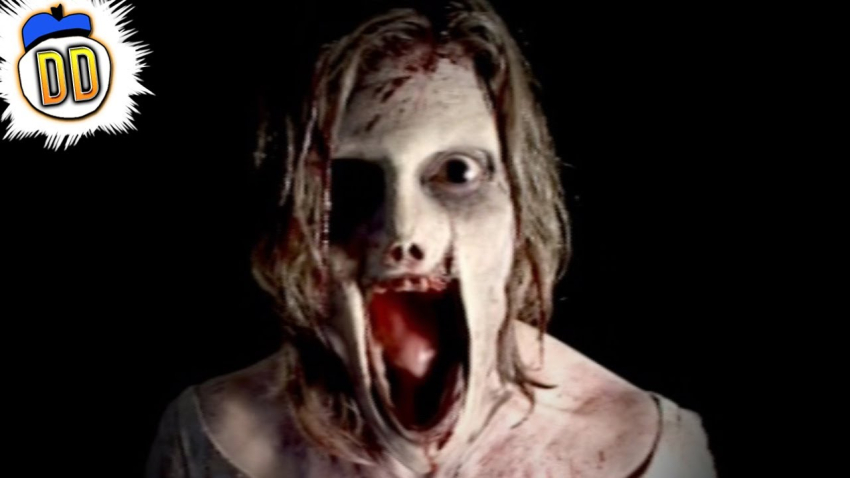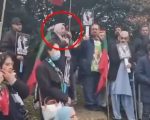MOSS (Norway) (Web Desk – Like many Europeans, Marianne Haaland Bogdanoff, a travel agency manager in this southern Norwegian town, does not go to church, except maybe at Christmas, and is doubtful about the existence of God.
But when “weird things” — inexplicable computer breakdowns, strange smells and noises and complaints from staff members of constant headaches — started happening at the ground-floor travel office, she slowly began to put aside her deep scepticism about life beyond the here and now.
After computer experts, electricians and a plumber all failed to find the cause of her office’s troubles, she finally got help from a clairvoyant who claimed powers to communicate with the dead. The headaches and other problems all vanished.
“I don’t know what she did,” Bogdanoff said.
“It was very strange,” she added, recalling how the clairvoyant “cleansed” her travel office of a ghostlike presence neither she nor her staff had seen but whose existence they had all felt and come to fear.
Hege Sandtro Kruse, another employee at the travel agency, described the whole experience as a “bit strange, a bit interesting and a bit creepy.
” All the same, she said, it worked: “What it was I don’t know. But there was something here, I am sure of that. Now it is gone. I know I am not a total lunatic.”
Ghosts, or at least belief in them, have been around for centuries but they have now found a particularly strong following in highly secular modern countries like Norway, places that are otherwise in the vanguard of what was once seen as Europe’s inexorable, science-led march away from superstition and religion.
While churches here may be largely empty and belief in God, according to opinion polls, in steady decline, belief in, or at least fascination with, ghosts and spirits is surging.
Even Norway’s royal family, which is required by law to belong to the Evangelical Lutheran Church, has flirted with ghosts, with a princess coaching people on how to reach out to spirits.
“God is out but spirits and ghosts are filling the vacuum,” said Roar Fotland, a Methodist preacher and assistant professor at the Norwegian School of Theology in Oslo.
Instead of slowly eliminating religion, as Sigmund Freud, Karl Marx and other theorists predicted, modernity has only channelled religious feelings in unexpected ways, Fotland said.
“Belief in God, or at least a Christian God, is decreasing but belief in spirits is increasing,” he added, describing this as part of a general resurgence of “premodern religion.”
Tom Hedalen, a road engineer and committed atheist who is chairman of Norway’s Humanist Association, insisted that religion is still on its last legs and that the grip of ghosts on rational, modern minds merely reflected the success of charlatans at playing on people’s fears.
The Humanist Association, which ran a national campaign under the slogan, “Don’t Let Yourself Be Cheated,” does “not believe in God, trolls or Santa Claus,” Hedalen said. “In the end, all religion will die out,” he added.
That could be some way off yet. The appeal of ghost stories has helped fuel the unexpected popularity of a television series called “The Power of Spirits,” now in its 10th season.
The show has around half a million viewers each Sunday, a huge audience in a country of just 5.1 million people and more than twice the number of regular churchgoers in Norway.
“We are bigger than the Norwegian church,” the show’s presenter, Tom Stromnaess, said. He said he did not believe in ghosts as “creatures with white sheets and black eyes” but, though initially very sceptical about paranormal phenomena, he has come around to the view that forces exist that cannot be seen or understood.
“It is very hard to say this is all just garbage.
This is for real,” he said, recounting how he had visited many homes where things happened that “defy all physical laws.”
Hundreds of people write to the show, which works with clairvoyants, to complain that their house or workplace is haunted and to ask for help. “So many people cannot all be crazy,” Stromnaess said.
With unconventional beliefs enjoying a boom, Oslo will in November host “Alternative Expo,” a jamboree of the occult featuring Tibetan eye-readers, New Age crystal collectors and hundreds of other practitioners of alternative faiths.
Even courts have been dragged into adjudicating on phenomena that nobody can actually see.
Two years ago, when a home buyer in the town of Vinstra, 160 miles north of Oslo, came to believe that the house he had agreed to buy was haunted, he tried to get the purchase cancelled, arguing that he should have been told about the ghost problem.
A court ruled that the buyer had to go through with the transaction regardless. Its verdict said that the seller had no obligation to disclose the existence of something that is “not generally accepted as existing at all.”
The court said it could not accept that “alleged mystical events in the form of ghosts fulfil the criterion of being a defect in the property.”
Also deeply sceptical is Velle Espeland, a folklorist at Norway’s national library and author of a book on the history of ghosts.
“We create ghosts to explain the inexplicable,” he said. “Ghosts are just the name we use for something we don’t understand.”
Ghosts, he added, always mirror the mindset of the people who claim to see or sense them, proving that they have no independent existence outside people’s imagination.
They also tend to pop up in clusters in specific places, suggesting their appearance may be linked to the power of persuasion in small communities.
The town of Moss has had so many ghost stories that City Hall organized a “ghost tour” led by Vibecke Garnaas, a woman who used to work at the “haunted” travel agency and who has now become a professional medium who charges an hourly rate of 800 Norwegian kroner (around $98) for ghost “cleansing” work.
“I can’t guarantee it will work” she said, explaining that she tries to “convince the energies to leave the premises but they have free will just like we do.”
Another local ghostbuster is Martin Ormen, a 19-year-old science student from Moss who believes that ghosts emit electromagnetic pulses that can be detected with a simple piece of equipment.
Along with a group of like-minded young friends, he travels around the region hunting for traces of ghosts and then posts videos of their findings — always invisible — on the Internet.
“It is bad and sad that society just says: If we can’t see it, it doesn’t exist,” he said.
Arild Romarheim, a Lutheran priest and recently retired theology lecturer, described the conviction of well-educated atheists and agnostics that ghosts exist as “the paradox of modernity” — a revival of old beliefs to slake an innate human thirst for a spiritual life left unsatisfied by the decline of the church.
Belief in ghosts, he said, has become so strong that even the Lutheran Church, to which most Norwegians formally belong, has adopted a so-called “ghost liturgy” for use by preachers who get asked by parishioners to help cleanse haunted houses.
Unn Bohm Tveito, also from Moss, recalled how she had never believed in or even thought about ghosts until she started working as the manager of the town’s tourism information office.
She kept noticing that German-language brochures always ended up being the most prominently displayed, which was odd since few tourists who visit Moss speak German.
In 2013, she raised the issue with other staff members, who said they had noticed the same thing. “Ghosts are not the first thing you think of, but we decided that this could not be explained in a normal way,” she said.
A clairvoyant sent by the ghost television show, she said, solved the mystery: a dead German soldier who had worked in the same building during the 1940-45 Nazi occupation of Norway was still on the premises and kept messing with the brochures.
“Whether you call them ghosts or spirits or something else, they exist,” Tveito said. The dead German, she added, has now moved on.













